The Alternate Universe of Soviet Arcade Games
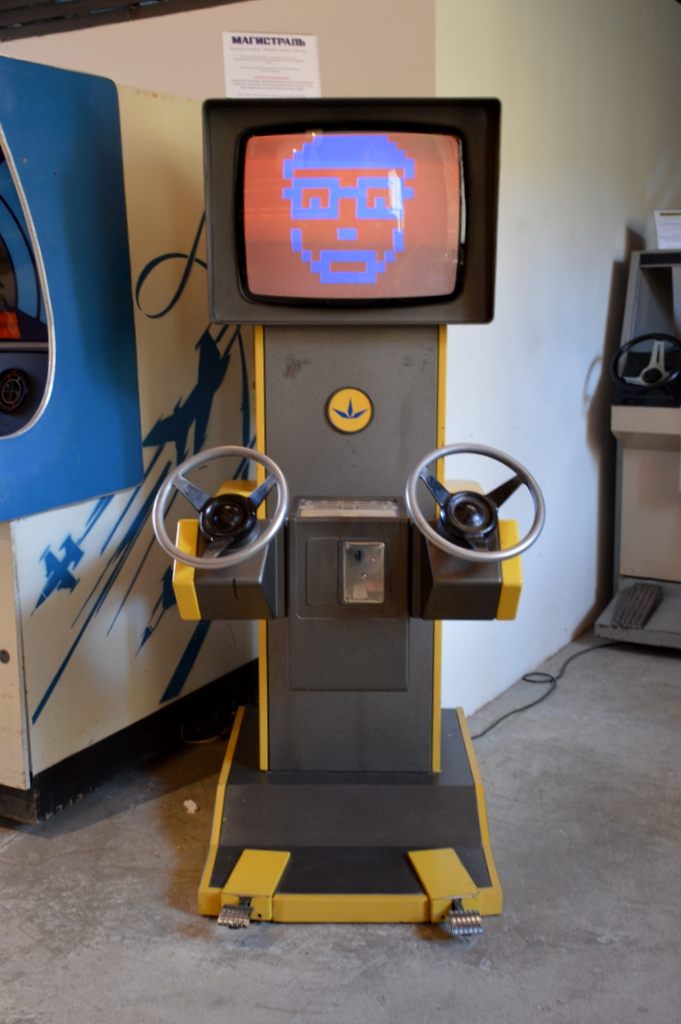 The Soviet arcade game “Magistral”. (All photos: Kristin Winet)
The Soviet arcade game “Magistral”. (All photos: Kristin Winet)
When you walk into the Museum of Soviet Arcade Games in St. Petersburg, the first thing you’ll see is a series of gray, hard-edged soda machines from the early 1980s. If you choose the one in the middle, it will dispense a tarragon-flavored and slightly fermented soda whose recipe relies on a syrup that has not been mass produced since the fall of the Soviet Union. It tastes not unlike a mix of molasses and breath mints.
All around us are beeps, pings, and shot blasts coming from rickety old machines that seem like they’ve time-traveled from the golden era of American arcade games. And yet, everything’s in Russian, we’re using kopecks as currency, and there is no Donkey Kong here.
This is not your typical museum. For one thing, everything is not only touchable, but playable. Designed to look like a 1980s USSR video game arcade, the museum is filled with restored games carefully modeled after those in Japan and the West and manufactured to the approval of the Cold War-era Soviet leader, Nikita Khrushchev.
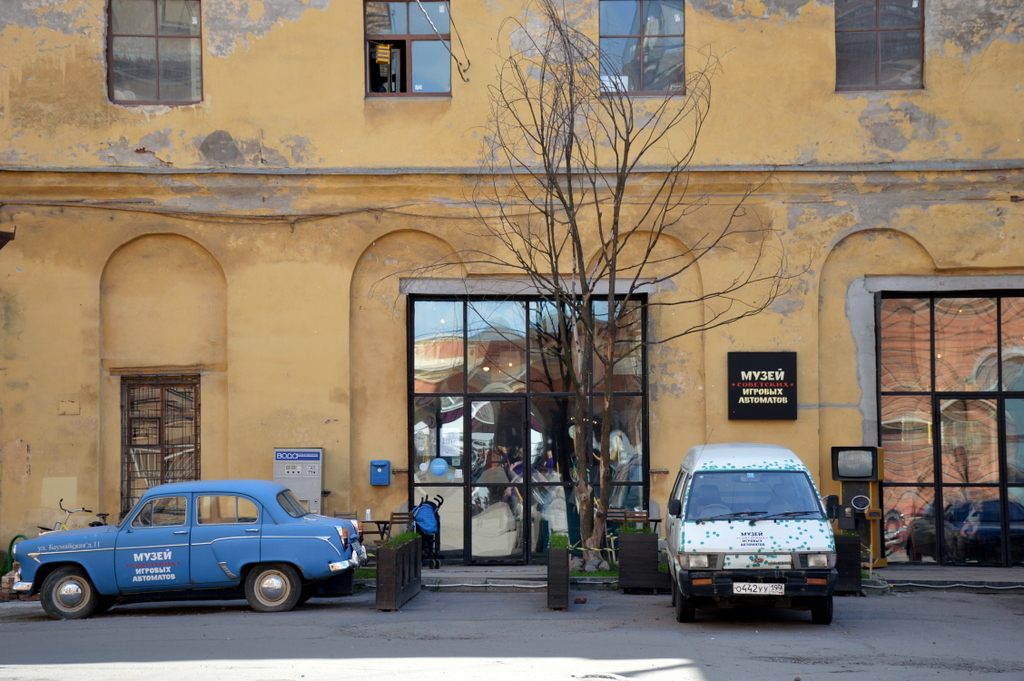 The museum entrance.
The museum entrance.
Now, 24 years after the dissolution of the Soviet Union, Russian families spend their afternoons here playing the propaganda arcade games of their youth, drinking increasingly hard-to-find sparkling beer from 1980s soda machines, and popping Soviet coins into strength-training and eye-coordination games that were approved by the Soviet government in the 1970s and 1980s as having “real” value to children.
The museum has recovered nearly 60 games, many of which are the last remaining ones in the world. The project began three years ago when four college students in St. Petersburg decided to rescue the bulky relics from obscurity, and teach the country about the USSR’s improbable arcade gaming history.
“The fact that some of these products are in danger of disappearing is why they are beloved,” says Dr. Stephen Norris, a Professor of History at Miami University of Ohio who specializes in Russian and post-Soviet studies. “Nostalgia for the video games of the 1970s and 1980s is part of a larger nostalgia for Soviet consumer products of late socialism,” a period when Russians were introduced to many popular items, from wall-mounted radios to beveled drinking glasses to vacuum cleaners.
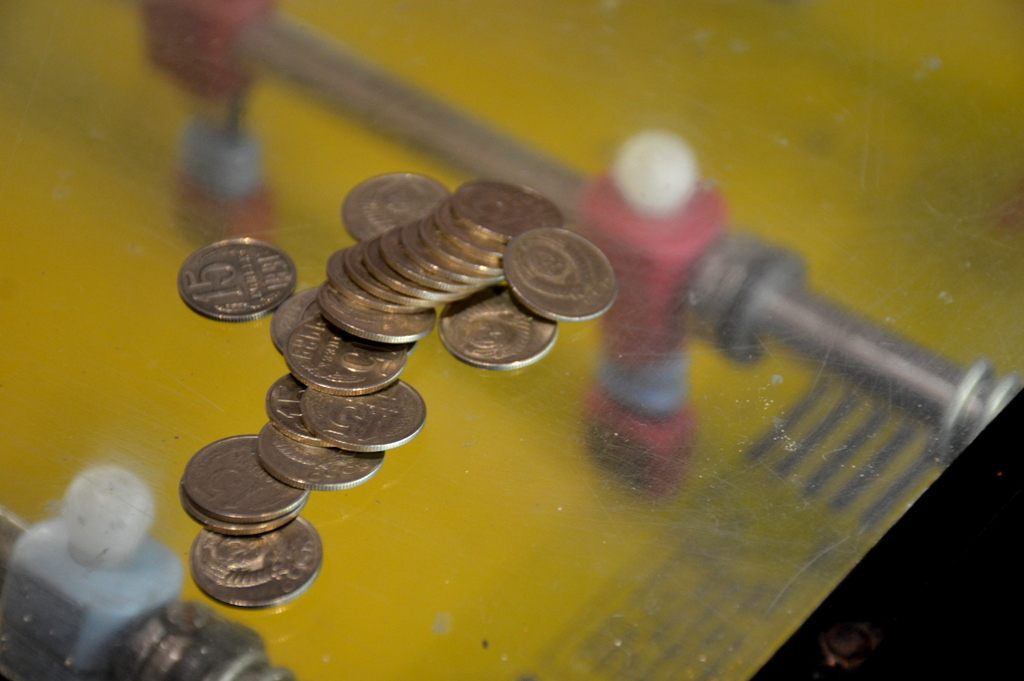 Soviet-era kopeck coins.
Soviet-era kopeck coins.
The story of how arcade games made it to the USSR is a circuitous one. Though it has never been substantiated by historians, the anecdote goes that on a trip to the United States, Khrushchev was so smitten with the arcade games he saw that, upon his return, he invited all the game makers to come to Russia and showcase their best games. Then, he bought all of them, and sent them to Russian military factories with orders to figure out what made them work. Afterward, he took bids for new game ideas.
“I have heard this anecdote too, but do not know if it’s apocryphal or not,” says Norris. “I cannot state with 100% certainty that it is this correct.”
Whether or not this is hearsay, what we do know is that the manufacture of arcade-style games in the USSR did take place in the wake of the famous American exhibit held at Sokolniki Park in 1959, an exhibition that ended with Khrushchev visiting America and returning with a renewed commitment to produce more consumer goods—among them, of course, the arcade games here in St. Petersburg today.
Once it was determined which games would be produced, the blueprints were allegedly sent to military factories that primarily made electronics used in nuclear testing and weapons. These were perhaps the only places in the USSR that had the manpower and the means to understand the engineering required to build the arcade games.
In a curious twist of fate, however, it meant that the instruction manuals were also produced in the factories, and therefore were considered classified government documents. Because of this, the manuals are thought to have all been destroyed. Therefore, anyone intent on restoring the historic arcade games today needs to do a lot of guesswork when servicing the old wires, pipes, lights, and engines.
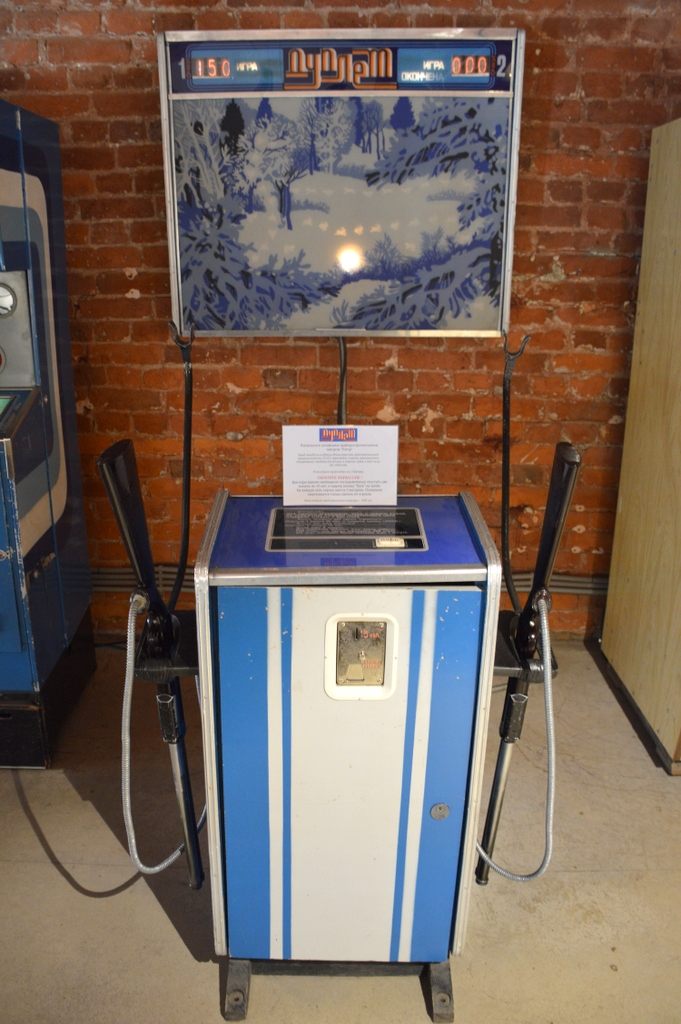 “Winter Hunt,” in which the gamer shoots bunnies who pop up in the snow.
“Winter Hunt,” in which the gamer shoots bunnies who pop up in the snow.
According to Oksana Kapulenko, one of the museum’s curators, there are three major differences between the Soviet games and those of Europe and North America in the 1980s: cost, weight, and subject matter. For one thing, it was extremely expensive to manufacture and distribute them, so they were rare. Secondly, clocking in at 330 to 375 pounds each, these hefty games weighed up to five times more than their prototypes across the ocean because of the lack of availability of lighter materials.
Because of the scarcity of materials after the fall of the Soviet Union, many of the machines were destroyed in order to repurpose their parts. And, unlike machines in the West, every single machine that was produced during Soviet-era Russia had to align with Marxist ideology.
What does that mean, exactly?
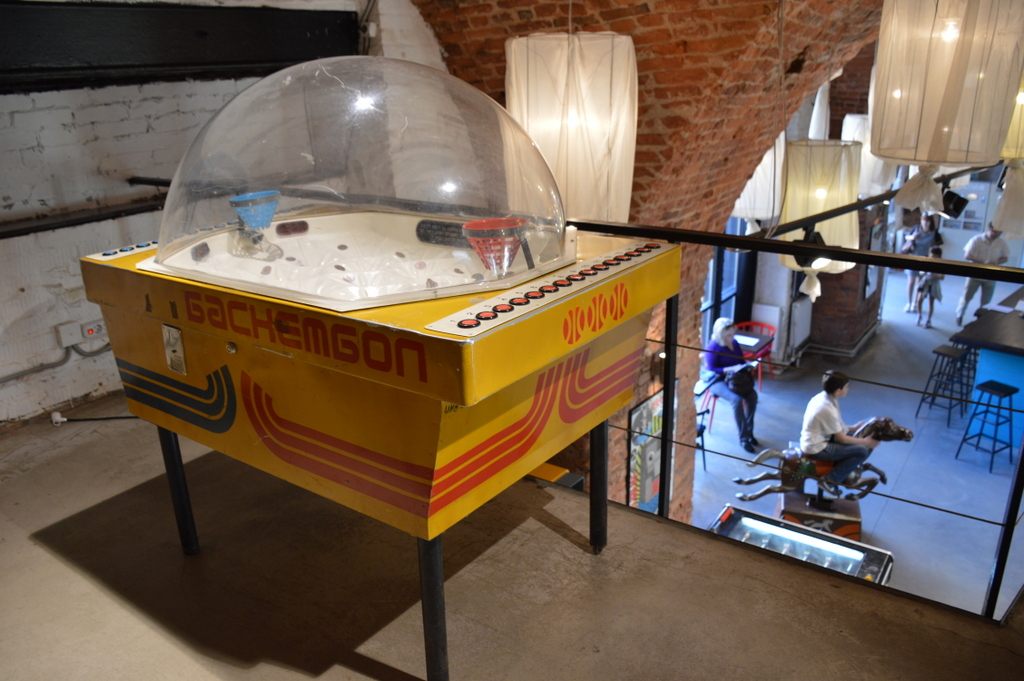 “Basketball” game.
“Basketball” game.
Well, to put it simply: it means no Pac-Man. It means no fantasies. It means presenting work as physical labor, promoting Communist patriotism, and glorifying habits of mind that were appropriate to Marxist thinking. Fantasy and role-playing games featuring treasure-hunting, princesses, and invented creatures had no home in the USSR.
Instead, the most popular games were created to teach hand-eye coordination, reaction speed, and logical, focused thinking. Not unlike many American games, these games were influenced by military training, crafted to teach and instill patriotism for the state by making the human body better, stronger, and more willful.
It also means no high scores, no adrenaline rushes, or self-serving feather-fluffing as you add your hard-earned initials to the list of the best. In Communist Russia, there was no overt competition.
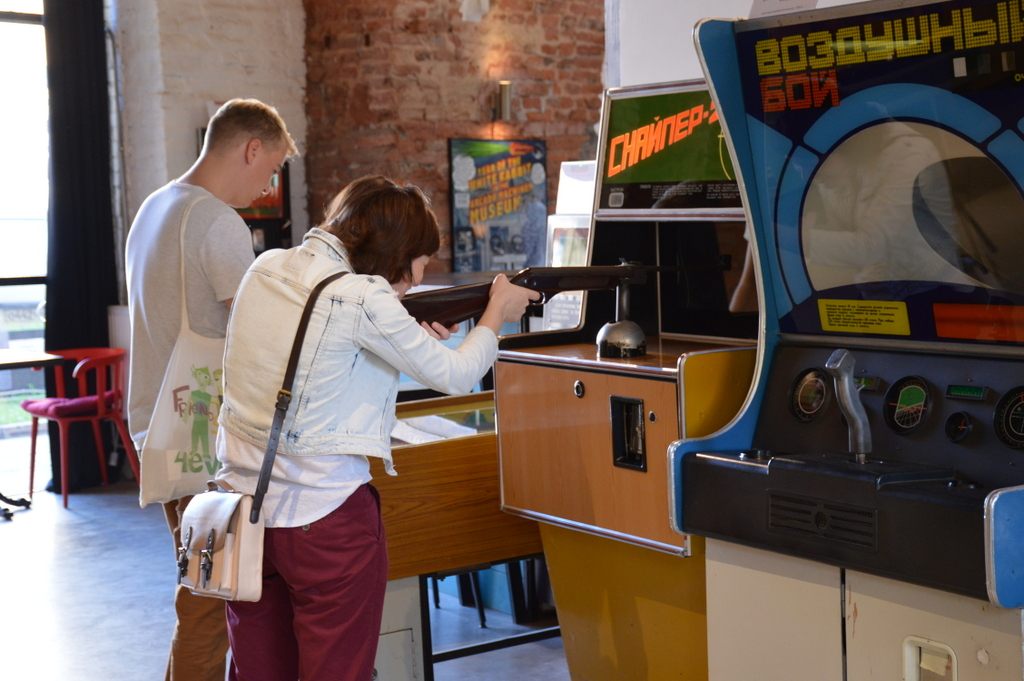 Gamers playing a shooting game called “Sniper 2”.
Gamers playing a shooting game called “Sniper 2”.
There is one curious game in the museum that seems to break this pattern. It was constructed under the guise of being a strength-training game for children using a popular children’s story as its framework. Much like the carnival games in the West in which someone pulls a level or smashes a hammer down onto a platform, this game—called Repka, or “radish”—is intended to test and increase a person’s brute strength by asking the gamer to pull up on a lever as hard as he or she can to help pull a stubborn radish out of the family garden.
The machine face of the family member whose strength the player matches with lights up after the game registers the amount of kilos they can pull. Both animals and humans feature as radish pickers. After failed attempts by a mouse, a cat, a dog, a daughter, and a grandma, the vegetable can only be pulled up once the grandpa jumps in and the entire family works together to pull it out collectively.
According to Norris, the fact that a group of young people revived these games says a lot about how nostalgia for the Soviet Union operates in Russia today. They “are not nostalgic for a restoration of the USSR and certainly not for the violence of the Stalin era,” he explains. Instead, theirs is “a wistful, often ironic attempt to make sense of the past and to keep parts of it alive.”
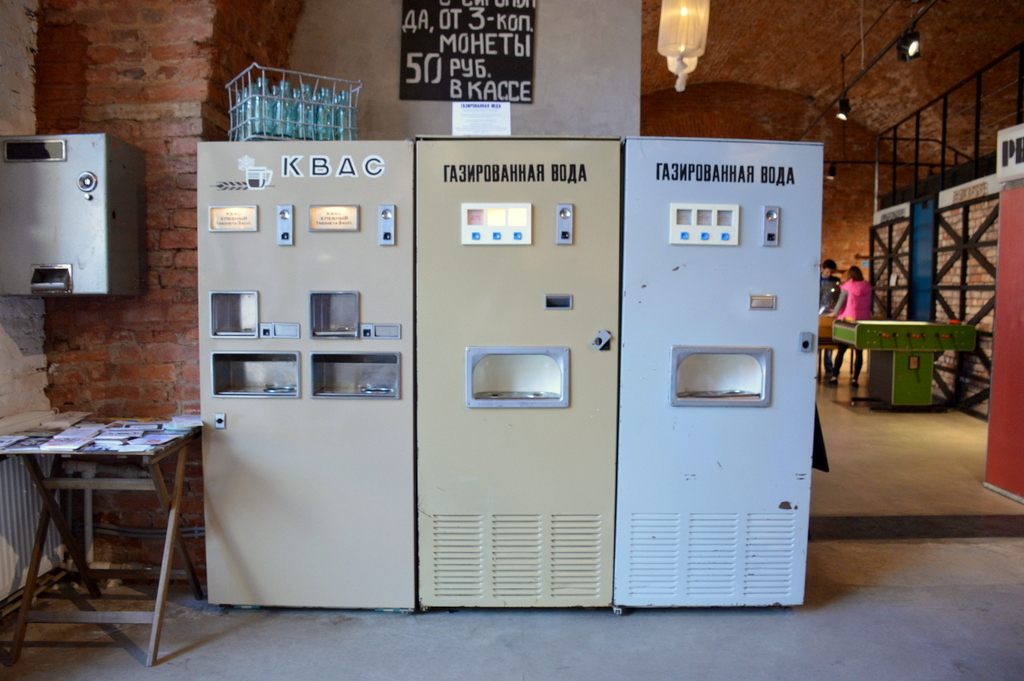 The three drink dispensers visitors in the entrance to the Museum.
The three drink dispensers visitors in the entrance to the Museum.
As with all conservation efforts, imminent questions loom over the future of these rickety games, clunking soda machines, and old photo booths. For one, the museum claims to already own nearly 85 percent of the world’s remaining supply of discontinued light bulbs that make the Snaiper-2 game work. What happens when they run out? What happens when the one factory in the country that still produces the tarragon-flavored syrup from the Soviet era stops making it? What happens when they can no longer find the right wires to properly configure the basketball game, a game that, underneath the hood, looks like a tangled pile of metal spaghetti?
The ongoing—and increasingly difficult—act of restoring, maintaining, and repairing these arcade machines is simultaneously an act of respect for the harsh reality of life in Soviet-era Russia, which used models from the West to create its own idiosyncratic gaming culture, and a defiance of it.
These questions are very real, and yet, the Russian attitude toward preserving play doesn’t involve keeping the machines locked up tight or preserved behind glass. “They are meant to be played,” curator Oksana tells me as she leads me upstairs, “not examined like specimens.”
 The menu at the museum’s cafe.
The menu at the museum’s cafe.
Oskana’s favorite game is called Gorodki, or “little village,” a bat-and-sticks game originally invented by Russian peasant farmers. The game began in rural Russia, where families would line up and try to knock down wooden poles arranged into shapes on the ground; the goal was to destroy as many of the pole arrangements (known as “little villages”) as possible.
According to the 18th-century Russian military leader Alexander Suvorov, the traditional game was a perfect method for teaching the tactics of warfare: striking the pins made players swift in attack; knocking the pins down honed their force; rebounding for the next attack heightened their awareness. The game saw a cultural revival in the 1970s, when nearly every stadium, health spa, summer camp, factory, and backyard had its own designated gorodki-playing area. Soon, it was turned into an arcade game, too.
The Gorodki game beeps to life after coins are dropped into the slot. As the “little villages” appear on the screen, spinning in circles across the screen, it feels a bit like playing old-school Tetris, as the poles spin around into little villages that resemble stars and airplanes, floating across the screen and waiting to be demolished.
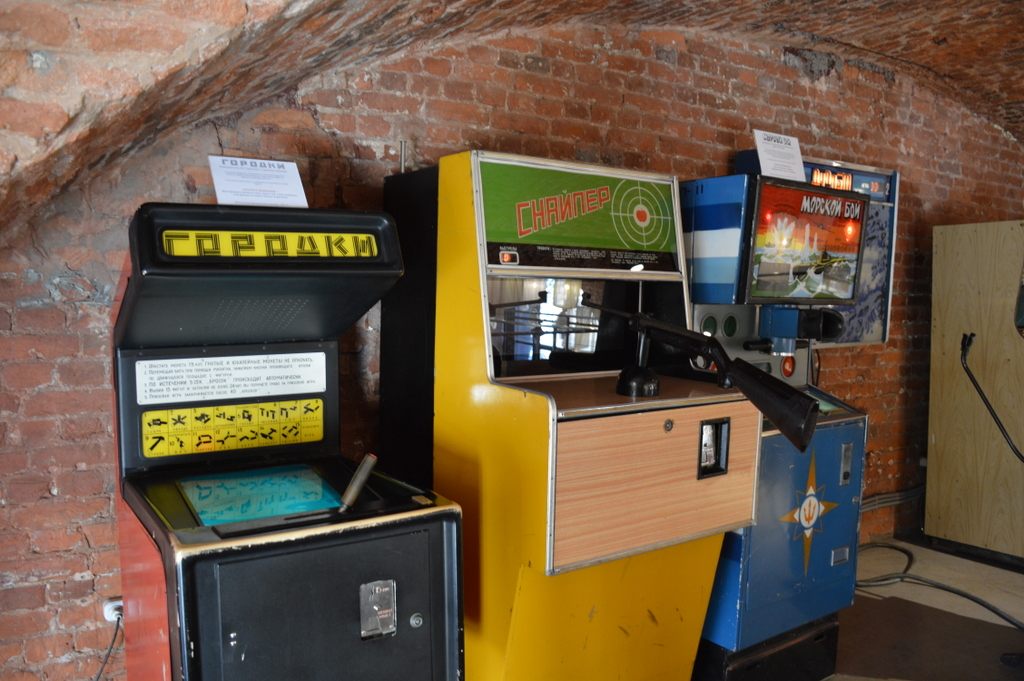 The ”Gorodki” game.
The ”Gorodki” game.
In recent years, the Russian Duma has taken up the issue of “patriotic games,” with members lamenting what they perceive as the harmful influence of Western games. “Lawmakers have called for games that introduce young Russian players to Russian heroes, Russian history, and Russian culture,” says Norris. Heeding this call, 1C Game Studios recently released a pair of video games based on the Battle of Stalingrad and the Battle of Moscow. “In many ways, the Russian video game market today is a return to the role the games of the Brezhnev era were meant to play.”
There may have been ulterior motives behind the development of Gorodki in the 1970s too, but Oksana admits she just thinks it’s fun. That seems to be the general feeling in this retro arcade parlor in St. Petersburg.



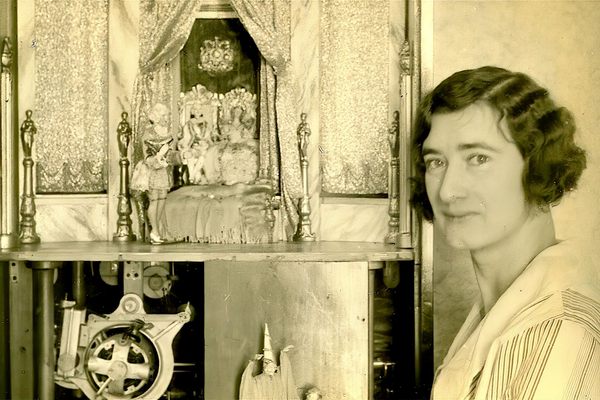
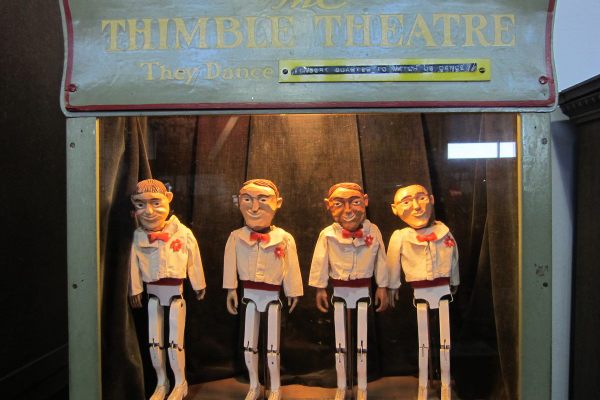




Follow us on Twitter to get the latest on the world's hidden wonders.
Like us on Facebook to get the latest on the world's hidden wonders.
Follow us on Twitter Like us on Facebook